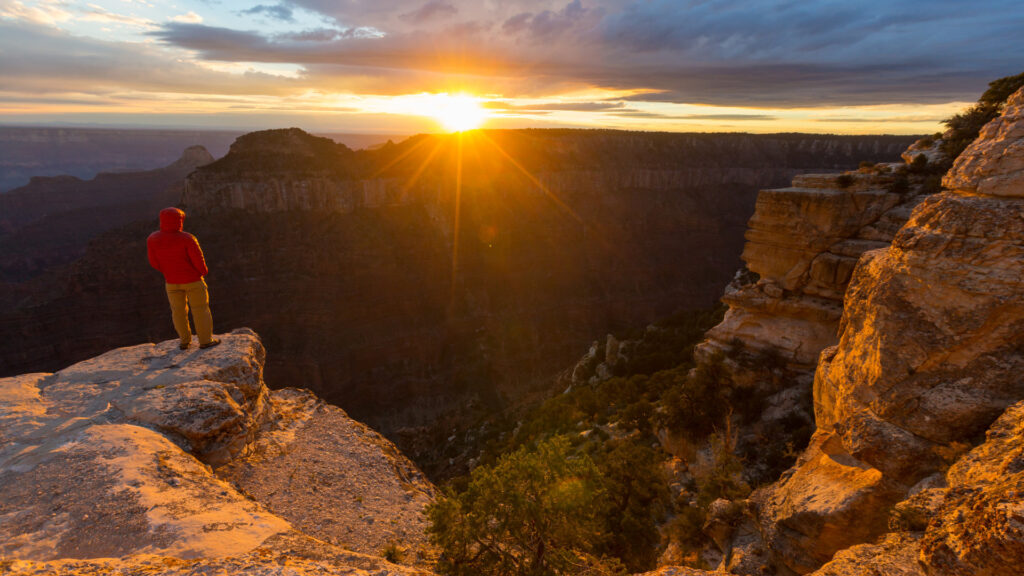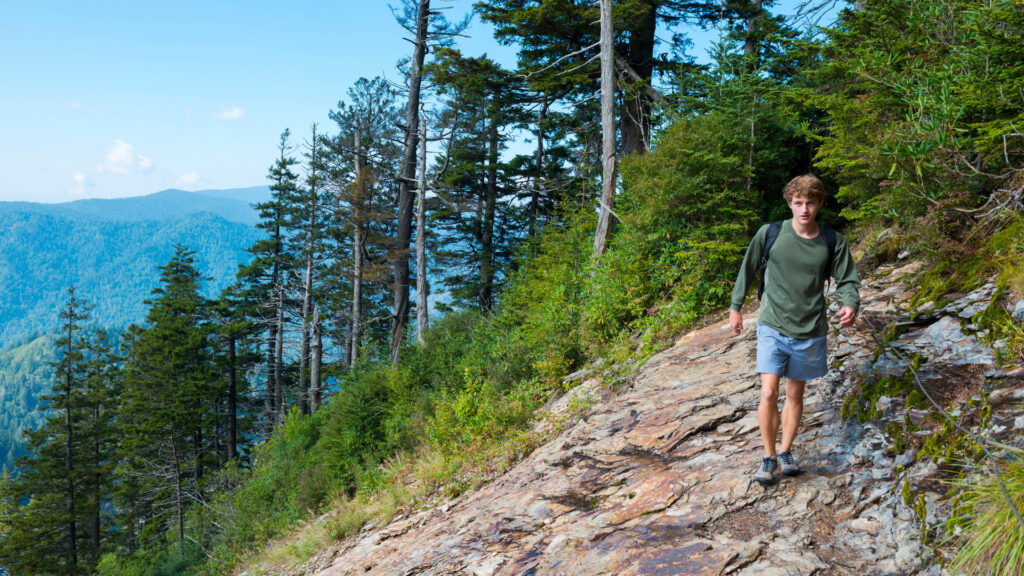Table of Contents Show
When you think of national parks, the word “deadly” probably doesn’t come to mind. You more likely think of “majestic” or “awe-inspiring.” But sadly, people lose their lives every year when visiting our national treasures.
Today, we’re looking at the deadliest national parks, and our top five may surprise you. Let’s dive in!
How Many National Parks Are in the US?
The National Park Service manages 424 sites across all 50 states, the District of Columbia, and U.S. Territories. These locations — often referred to as parks or units — cover more than 85 million acres. They include national battlefields, national lakeshores, national monuments, national scenic trails, and more.
Of those 424 sites, 63 have the distinction of being national parks. California has the most national parks, with nine in total.
Alaska has the largest national park, Wrangell-St. Elias National Park and Preserve. It’s six times the size of Yellowstone, stretching over 13 million acres in southeastern Alaska.
How Many People Visit America’s National Parks?
In 2021, over 297 million people visited the national parks. In 2022, this number increased by 5% to almost 312 million. The years with the highest visitation were 2016 and 2017. In both years, over 330 million people flocked to these protected areas.
The national park with the most visitors yearly is Great Smoky Mountains National Park along the Tennessee-North Carolina border. Over 10 million visitors have driven through this park every year since 2014.
In 2021, the park saw over 14.1 million visitors, the most ever recorded at Great Smoky Mountains National Park.
Of all the 424 national park sites, the Blue Ridge Parkway recorded the most visitors in 2022, with 15.7 million. The Golden Gate National Recreation Area was second with 15.6 million guests.
How Many People Have Died in America’s National Parks?
Sadly, deaths occur every year because so many people visit our national parks. Between 2014 and 2021, approximately 2,000 people died in national parks.
The leading cause of death was vehicle crashes. During that time, 415 people lost their lives in car accidents. Drownings and medical deaths were the next two leading causes.
According to this data released by the National Park Service, 241 visitors died in 2022. Causes include slips or falls, suicide, motor vehicle crash, drowning, medical-related incidents, homicide, and environmental factors. Many also have an unknown cause of death.
Is It Dangerous to Visit the National Parks?
In 2022, over 311 million people visited America’s national parks. Even though the 241 deaths are tragic, it’s a minuscule percentage of total visits. Less than 1% of visitors died in national parks.
And even though wildlife encounters are the ones that make the news headlines, these are extremely rare. Only five deaths reported between 2014 and 2021 resulted from wildlife attacks.
Are there risks when visiting national parks? Certainly, anytime you drive anywhere, you put yourself at risk of a vehicle accident. Anytime you go hiking, biking, or paddling, you face some danger. But if you follow posted signs and obey laws and regulations, you can have a safe and memorable trip.
When enjoying outdoor recreation at national park sites, take care of your body by being in good physical shape, drinking lots of water, and eating regularly during the day.
You shouldn’t be afraid to visit these national treasures. They’re places of stunning beauty, rich history, and amazing wildlife.
The Top 5 Deadliest National Parks in the US
Our list of deadliest parks isn’t limited to just the national parks. We’ve included all 424 sites and named the five locations where the most deaths occurred between 2014 and 2021.
1. Lake Mead National Recreation Area
Lake Mead National Recreation Area tops the list with 145 deaths during these eight years. Of those 145 deaths, 47 were drownings. Since this is a popular destination for boating and swimming, it’s not surprising that drowning was the leading cause of death.
In 2022, 24 people died from motor vehicle crashes, medical-related deaths, suicides, and drownings.
2. Grand Canyon National Park
The second deadliest national park is the Grand Canyon. Although you may imagine dozens of people falling off the rim every year, this isn’t the case. Most of the deaths reported aren’t slips. They’re medical-related, usually because of heat.
Officials regularly warn hikers of the dangers of the heat at the Grand Canyon. From 2014 to 2021, a little less than 100 people died at this natural wonder. Almost half were from medical issues. Only eight people died in 2022.
You can read more about the Grand Canyon in our article “How Many People Fall Into the Grand Canyon?”

3. Yosemite National Park
Another location where officials receive numerous health-related calls is Yosemite National Park in California. It makes its way to No. 3 on our list with 94 deaths during those eight years, mostly attributed to medical problems. Eight deaths occurred in 2022.
4. Great Smoky Mountains National Park
The last two national parks on our list of deadliest locations make the top five because of the number of cars traveling through them yearly. Motor vehicle crashes are the leading cause of death in both Great Smoky Mountains National Park and the Natchez Trace Parkway.
Of the 80 deaths reported from 2014 to 2021 in the Smokies, 29 resulted from car accidents. Interestingly, of the 11 deaths in 2022, only two were vehicle crashes.
The other causes included drownings, suicides, environmental causes, and medical problems.

5. Natchez Trace Parkway
The Natchez Trace Parkway stretches 444 miles through Alabama, Mississippi, and Tennessee. So it’s not surprising that car accidents are the leading cause of death here. Of the 74 deaths in those eight years, 62 resulted from motor vehicle crashes.
North Cascades National Park Has Highest Mortality Rate
North Cascades National Park didn’t make our list of deadliest national parks because it has fewer visitors, meaning fewer reported deaths in comparison.
However, when looking at the mortality rate, this Pacific Coast national park has the highest mortality rate, with nine deaths among approximately 220,500 visitors.
It’s still a minuscule percentage of less than 1%, but it’s the highest among the national parks. These deaths resulted from falls, motor vehicle crashes, environmental causes, and medical problems.
Tips to Stay Safe While Visiting National Parks
The national parks aren’t dangerous. But you should take some precautions to ensure your safety and the safety of others. We’ve listed a few tips we think are important to make your visit enjoyable and memorable.
Drive Slowly
Always obey the posted speed limit. Often it’s 25 miles per hour or less as you travel through national parks. You’re not in a rush. You’re there to enjoy the beauty and magnificence of these places.
Also, pay attention to pedestrians and cyclists who share the road, especially in mountainous areas. When driving slowly, you have a much easier time stopping or slowing down when necessary.
Keep in Mind: Looking for scenic routes to add to your bucket list? These RVers Shared the Most Scenic Routes They’ve Ever Traveled

Understand Swimming Risks
There are usually no lifeguards at lakes or rivers in national parks. These are “swim at your own risk” locations. Other places will post signs saying, “No swimming allowed.”
It’s vitally important that you follow the posted regulations. The water may have strong currents, bacteria, or all sorts of other risks that make the area closed off to swimming.
Pay Attention to the Weather
Many people enjoy hiking, biking, climbing, paddling, and other outdoor recreation at America’s national parks. These are fantastic ways to explore. But pay attention to the weather before you head out.
For example, flash flooding is common in the Southwest. And desert parks reach temperatures over 100 degrees consistently in the summer. Don’t take unnecessary risks to enjoy the outdoors.
Keep in Mind: Have You Driven the Most Dangerous Highway in the US? Click the link to see!
Follow Climbing Regulations
Like swimming, you also must consider the risks of climbing. Always check in at the visitor center, get the necessary permits, and ask questions about the climbing conditions before heading out. These rules are in place for a reason. They protect the land and those on it.
Keep Your Distance From Wildlife
Finally, even though encounters with wildlife are rare, always keep your distance. If you’re at Yellowstone and stop for a bison crossing, don’t get out of your car.
If you’re hiking in Shenandoah National Park and see a black bear, don’t approach it. These aren’t the times for a perfect selfie. These are life-or-death situations where your response could prove fatal.

Enjoy America’s National Parks but Do So Responsibly
Our national parks are amazing. From the battlefields in the East to the Native American pueblos of the Southwest, you’ll find so much to discover! We love visiting these places, learning more about our nation’s history and culture, and viewing the breathtaking scenery.
But we must all do so responsibly. When you visit your next national park site, drive safely, follow the rules, and protect yourself from heat, weather, and wildlife.
Were you surprised by our list of the top five deadliest national parks?






